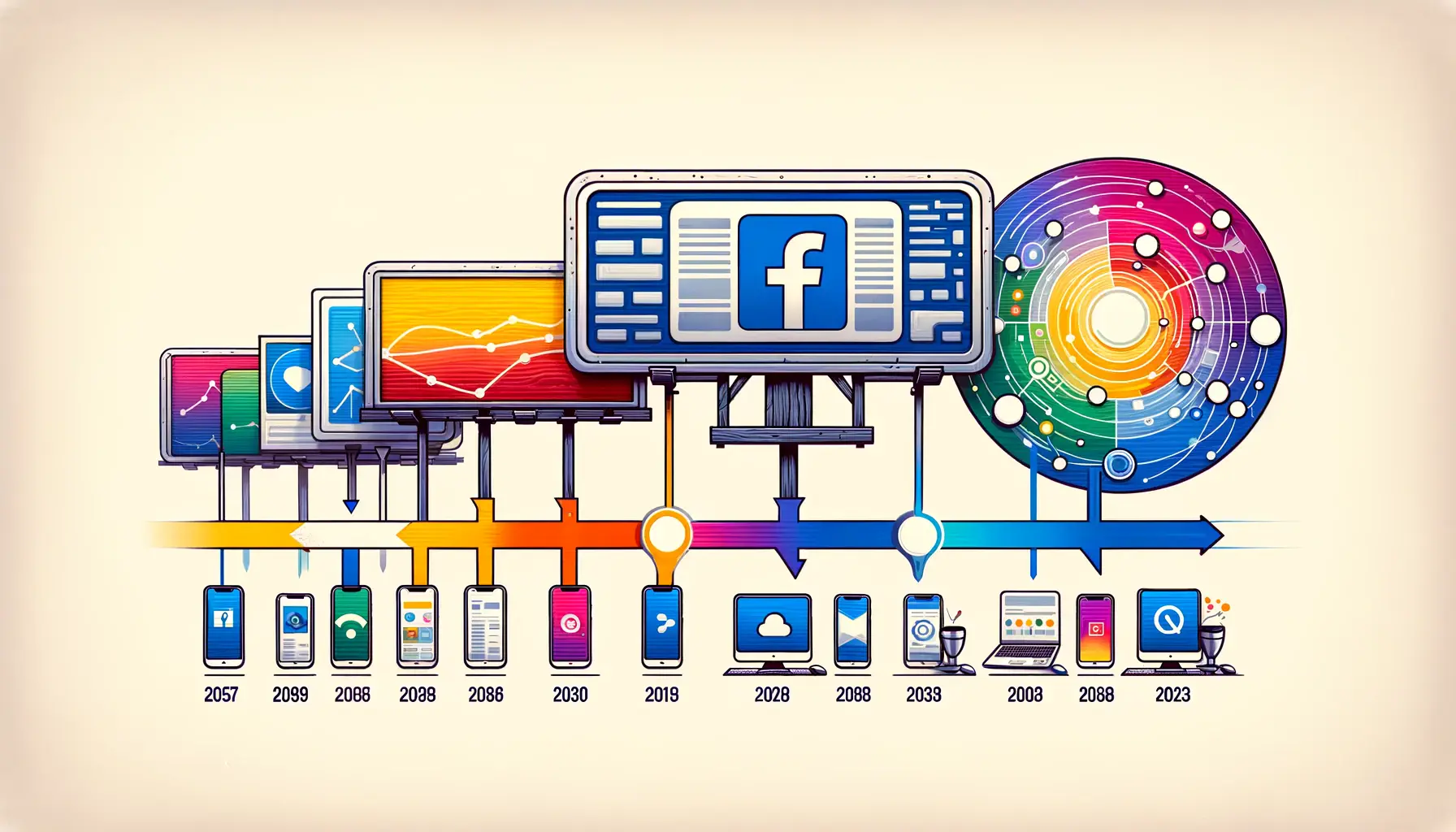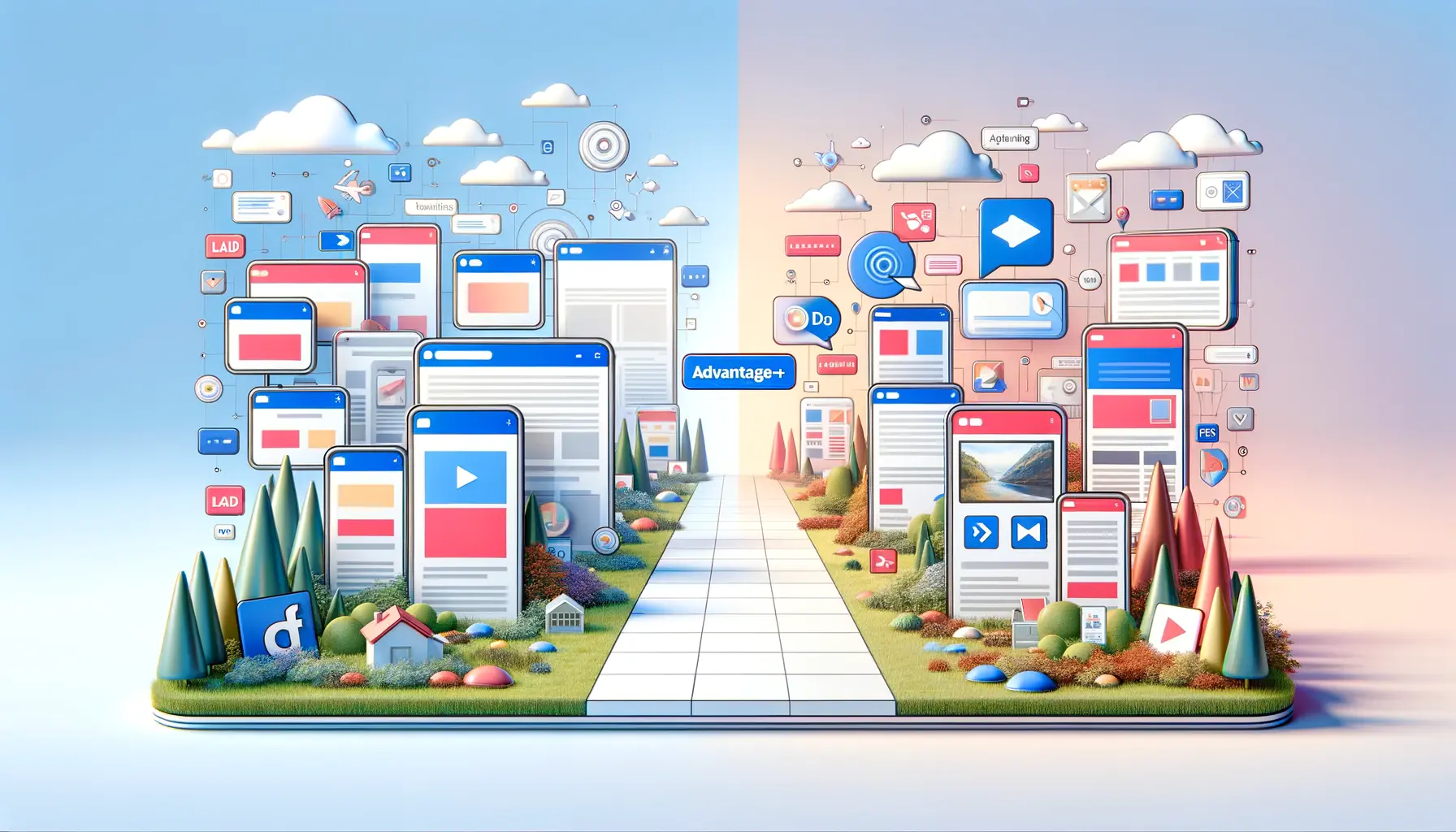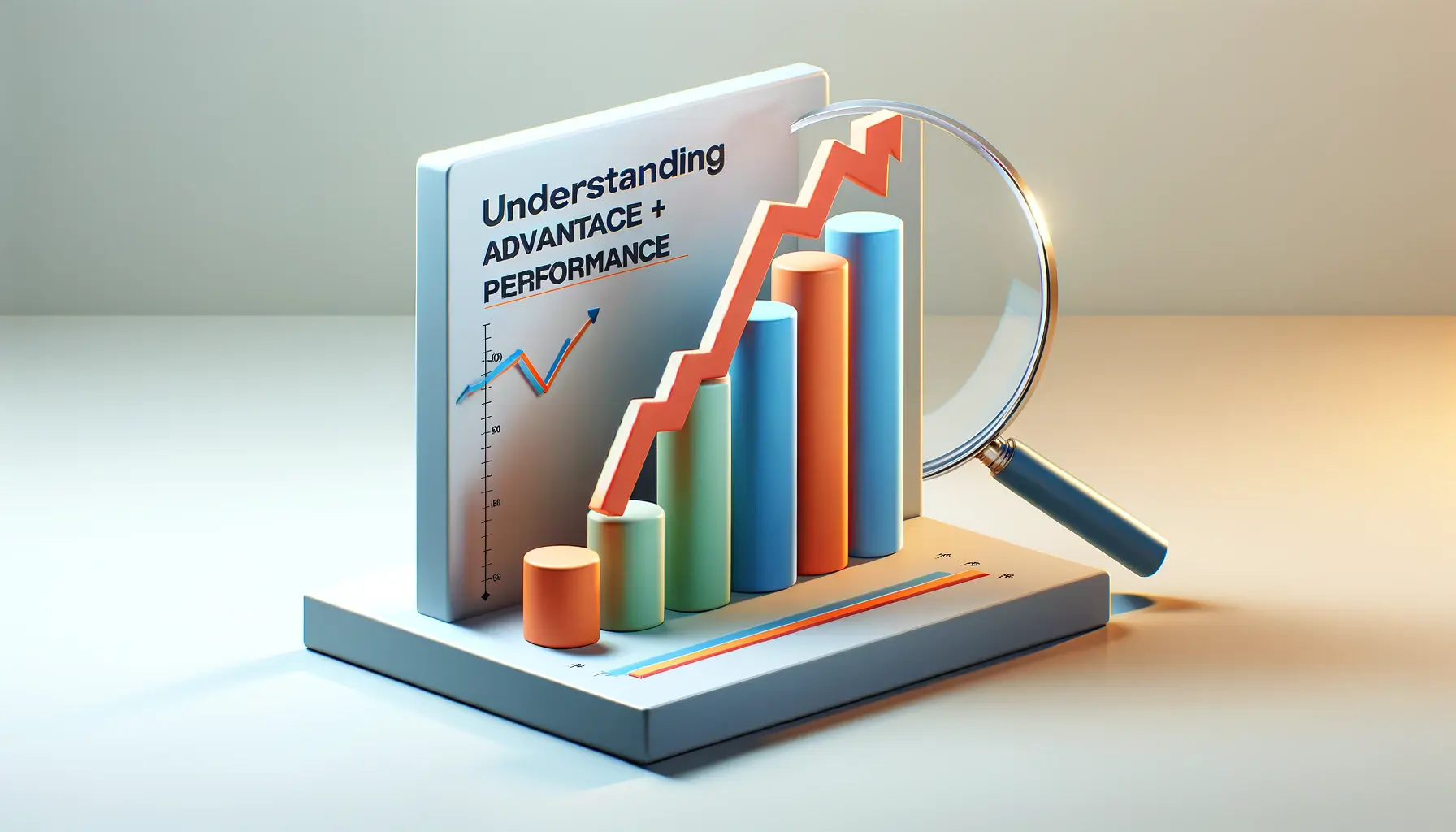The digital marketing landscape has undergone a significant transformation over the years, with Facebook Ad Campaigns standing at the forefront of this evolution.
As a pivotal platform for advertisers worldwide, Facebook has not only expanded its user base but also continuously innovated its advertising solutions to meet the dynamic needs of marketers.
This article delves into the intricate journey of Facebook Ad Campaigns, exploring how they have evolved to become a cornerstone in the realm of digital advertising.
From its inception, Facebook recognized the potential of leveraging its vast network for targeted advertising.
The platform’s unique ability to connect businesses with a highly engaged audience has set a new benchmark in the advertising world.
With the introduction of sophisticated targeting options, creative ad formats, and comprehensive analytics, Facebook Ad Campaigns have transformed the way brands communicate with their potential customers, offering unparalleled advantages in reaching and engaging with their target audience effectively.
- The Genesis of Facebook Advertising
- Advancements in Ad Targeting and Personalization
- Integration of Video Content in Ad Campaigns
- Expanding Beyond Facebook: Instagram and Audience Network
- Advancements in Measurement and Analytics
- The Role of Artificial Intelligence in Shaping Ad Campaigns
- Emerging Trends and the Future of Facebook Ad Campaigns
- Conclusion: Navigating the Future of Facebook Ad Campaigns
- FAQs: Navigating the Evolution of Facebook Ad Campaigns
The Genesis of Facebook Advertising
Early Days and Initial Offerings
The journey of Facebook Ad Campaigns began in the mid-2000s when the platform introduced its first advertising options.
Initially, these were simple, text-based ads that allowed businesses to reach users based on basic demographic information.
Despite their simplicity, these early ads laid the groundwork for what would become a highly sophisticated advertising ecosystem.
The simplicity of these initial offerings was crucial in attracting small businesses to the platform, democratizing access to digital advertising.
As Facebook’s user base grew, so did the sophistication of its ad offerings.
The introduction of the self-serve ad platform was a game-changer, enabling businesses of all sizes to create and manage their ad campaigns with ease.
This pivotal move not only scaled Facebook’s advertising capabilities but also empowered advertisers with tools to track and measure the performance of their campaigns, setting the stage for more advanced targeting and optimization features.
Targeting Evolution and Audience Engagement
The real breakthrough in Facebook Ad Campaigns came with the introduction of advanced targeting options.
Leveraging the vast amount of data collected on its users, Facebook began offering advertisers the ability to target their ads based on interests, behaviors, and even connections.
This level of granularity in targeting was unprecedented and opened up new avenues for advertisers to create highly personalized and relevant ad experiences for their audiences.
The evolution of targeting capabilities was accompanied by an increased focus on audience engagement.
Facebook introduced various ad formats designed to capture users’ attention and encourage interaction.
From carousel ads that showcased multiple products in a single ad to video ads that told compelling brand stories, these innovative formats were designed to enhance user engagement and drive better campaign performance.
The inception of Facebook’s advertising platform marked the beginning of a new era in digital marketing, offering businesses unprecedented access to a vast and engaged audience.
As we reflect on the early days of Facebook Ad Campaigns, it’s clear that the platform’s commitment to innovation and user engagement has been instrumental in shaping the digital advertising landscape.
The evolution from simple text-based ads to complex, highly targeted campaigns reflects a broader trend towards more personalized and engaging advertising experiences.
As Facebook continues to evolve, it remains at the forefront of digital marketing, constantly pushing the boundaries of what’s possible in advertising.
Advancements in Ad Targeting and Personalization
The evolution of Facebook Ad Campaigns took a significant leap forward with the introduction of more sophisticated ad targeting and personalization techniques.
This era marked a departure from broad, demographic-based targeting to more nuanced and dynamic strategies that leveraged user data for hyper-personalized ad experiences.
The advancements in this domain not only enhanced the effectiveness of ad campaigns but also significantly improved the user experience by delivering more relevant content.
Introduction of Custom and Lookalike Audiences
One of the most groundbreaking features introduced by Facebook was the concept of Custom Audiences.
This allowed advertisers to target ads to existing customers or users who had interacted with their content, both on and off Facebook.
By uploading lists of customer information, businesses could re-engage with their audience in a more personalized manner, leading to higher conversion rates and loyalty.
- Custom Audiences: Enabled advertisers to directly target users based on previous interactions, such as website visits or app usage, making ads more relevant to the user’s interests and behaviors.
- Lookalike Audiences: This feature expanded on the concept of Custom Audiences by allowing advertisers to reach new users who shared similar characteristics with their existing customers. By analyzing the traits of Custom Audiences, Facebook could identify and target new segments with high potential for engagement.
Dynamic Ads and AI-Driven Personalization
As Facebook’s targeting technology evolved, so did the complexity and effectiveness of its ad formats.
Dynamic Ads emerged as a powerful tool for e-commerce businesses, automatically showcasing the most relevant products to users based on their past interactions.
This not only streamlined the ad creation process but also ensured that users were presented with products they were genuinely interested in.
- Dynamic Product Ads: These ads dynamically changed based on the user’s behavior and preferences, showcasing products from the advertiser’s catalog that the user was most likely to purchase.
- AI-Driven Personalization: Leveraging artificial intelligence, Facebook enhanced its ad targeting capabilities, predicting user preferences and delivering personalized ad experiences at scale. This AI-driven approach allowed for more efficient use of ad budgets and improved overall campaign performance.
The shift towards more advanced targeting and personalization techniques represented a significant milestone in the evolution of Facebook Ad Campaigns, highlighting the platform’s commitment to creating meaningful connections between businesses and their audiences.
The introduction of these sophisticated targeting options transformed Facebook from a mere advertising platform to a powerful tool for building deep, lasting relationships with customers.
By focusing on the individual needs and preferences of each user, Facebook Ad Campaigns became more than just a means to an end; they became a vital part of a brand’s overall marketing strategy, driving not only sales but also customer satisfaction and loyalty.
Integration of Video Content in Ad Campaigns
The digital advertising landscape witnessed a pivotal shift with the integration of video content into Facebook Ad Campaigns.
Recognizing the growing consumer preference for video content, Facebook introduced various video ad formats, significantly enhancing the way brands engage with their audience.
This move not only catered to the evolving content consumption habits but also opened up new avenues for creative storytelling and brand expression on the platform.
Video ads quickly rose to prominence for their ability to convey complex messages in an engaging and easily digestible format.
The dynamic nature of video content, combined with Facebook’s sophisticated targeting capabilities, allowed advertisers to create highly impactful campaigns that resonated with viewers on a deeper level.
Evolution of Video Ad Formats
Facebook’s foray into video advertising began with simple in-feed video ads but soon expanded to include a variety of formats tailored to different marketing objectives and user experiences.
Each format offered unique benefits, from maximizing reach and visibility to driving specific user actions like website visits or purchases.
- In-Feed Video Ads: Seamlessly integrated into the user’s News Feed, these ads provided a natural viewing experience, encouraging higher engagement rates.
- Stories Ads: Capitalizing on the popularity of Facebook Stories, these full-screen vertical videos offered a more immersive ad experience, ideal for capturing the audience’s attention in a more personal and direct way.
- Video Carousel Ads: Allowing advertisers to showcase multiple videos within a single ad unit, carousel ads were perfect for storytelling or highlighting different aspects of a product or service.
Impact of Video Ads on Engagement and Conversion
The introduction of video ads marked a significant improvement in engagement metrics across Facebook Ad Campaigns.
Videos, with their ability to capture attention quickly, resulted in higher click-through rates (CTRs) and longer dwell times compared to static image ads.
Moreover, the emotional and visual appeal of video content often led to increased sharing and interaction, extending the reach of campaigns beyond the targeted audience.
- Enhanced Engagement: Video ads consistently outperformed other ad formats in terms of user engagement, with viewers more likely to like, comment, and share video content.
- Higher Conversion Rates: By providing a more compelling and informative ad experience, video ads often led to higher conversion rates, making them an invaluable tool for advertisers aiming to drive sales and other desired actions.
The strategic integration of video content into Facebook Ad Campaigns underscored the platform’s adaptability to changing content consumption trends, further cementing its position as a leader in digital advertising.
The evolution of video advertising on Facebook reflects the platform’s ongoing commitment to innovation and its understanding of the importance of engaging content in driving marketing success.
As video continues to dominate social media, the role of video ads in Facebook’s advertising ecosystem is expected to grow, offering even more opportunities for brands to connect with their audience in meaningful ways.
Expanding Beyond Facebook: Instagram and Audience Network
The expansion of Facebook’s advertising capabilities to Instagram and the Audience Network marked a significant evolution in the platform’s strategy, broadening the horizons for advertisers seeking to reach diverse audiences across multiple channels.
This strategic move not only enhanced the visibility of ad campaigns but also provided advertisers with more versatile and creative avenues to connect with their target audience.
Integrating Instagram into Facebook’s advertising ecosystem was a game-changer.
As a visually-driven platform with a highly engaged user base, Instagram offered a unique environment for brands to showcase their creativity and connect with audiences, especially younger demographics, through visually captivating content.
Leveraging Instagram’s Visual Appeal
Instagram ads, with their focus on high-quality imagery and video, opened up new possibilities for storytelling and brand expression.
Advertisers could now leverage Instagram’s aesthetic appeal to create ads that not only blended seamlessly with the user’s feed but also stood out for their artistic and creative quality.
This alignment between ad content and the platform’s visual nature resulted in higher engagement rates and a more positive reception from users.
- Stories Ads: Taking advantage of Instagram’s Stories feature, advertisers could create full-screen, immersive ads that captured users’ attention in a dynamic and interactive way.
- Shoppable Posts: Instagram’s introduction of shoppable posts allowed advertisers to tag products directly in their images or videos, making it easier for users to shop directly from the ad, thereby streamlining the path to purchase.
Reaching Broader Audiences with the Audience Network
The Audience Network extended Facebook’s advertising reach beyond its own platforms, allowing advertisers to place their ads on a wide range of third-party apps and websites.
This expansion significantly increased the potential touchpoints for reaching audiences, enabling advertisers to deliver their message across the web and mobile apps, thereby maximizing their campaign’s overall reach and impact.
- Native Ads: Within the Audience Network, native ads allowed advertisers to match the look and feel of the content within the apps or websites where they appeared, providing a non-intrusive user experience.
- Interstitial and Rewarded Video Ads: These formats offered engaging ways to capture attention, with interstitial ads appearing at natural breaks in content and rewarded videos offering incentives for viewing.
The integration of Instagram and the Audience Network into Facebook’s advertising ecosystem represented a strategic move towards creating a more cohesive and comprehensive advertising experience, enabling brands to tell their stories across a wider array of channels and touchpoints.
The expansion of Facebook’s advertising capabilities to include Instagram and the Audience Network underscored the platform’s commitment to providing advertisers with innovative solutions to meet their marketing objectives.
By offering a diverse range of channels and formats, Facebook has solidified its position as a versatile and powerful advertising platform capable of reaching audiences wherever they are online.
Advancements in Measurement and Analytics
The evolution of Facebook Ad Campaigns has been significantly influenced by advancements in measurement and analytics.
As the platform’s advertising capabilities grew, so did the need for more sophisticated tools to track, analyze, and optimize ad performance.
Recognizing this, Facebook introduced a suite of analytics features that allowed advertisers to gain deeper insights into their campaigns, enabling data-driven decision-making and more effective ad strategies.
These advancements in measurement and analytics have been pivotal in transforming how advertisers approach campaign management, moving from a focus on mere ad delivery to a more nuanced understanding of ad impact and user behavior.
Introduction of Facebook Pixel and Conversion Tracking
The introduction of the Facebook Pixel was a milestone in the platform’s analytics capabilities.
This small piece of code, when added to a website, enabled advertisers to track user actions after they clicked on an ad, providing valuable insights into conversion rates and the effectiveness of ad campaigns.
Conversion tracking became a cornerstone of campaign optimization, allowing advertisers to understand which ads were driving desired actions, such as purchases, sign-ups, or downloads.
- Custom Conversions: Advertisers could define specific actions on their website as conversions, tailoring the pixel to track a wide range of user behaviors tailored to their unique business objectives.
- Optimization for Conversions: With data from the pixel, advertisers could optimize their ad campaigns for specific conversion events, ensuring that their ad spend was directed towards the most effective strategies for driving business results.
Enhanced Analytics with Facebook Insights
Facebook Insights further expanded the analytics capabilities available to advertisers, offering detailed reports on ad performance, audience demographics, and engagement metrics.
This tool provided a comprehensive overview of how ads were performing across different segments of the audience, enabling advertisers to refine their targeting and creative strategies based on real-world data.
- Audience Insights: By analyzing the characteristics and behaviors of the audience engaging with their ads, advertisers could identify high-performing segments and tailor their campaigns to better resonate with these groups.
- Ad Performance Insights: Detailed metrics on ad impressions, clicks, and conversions helped advertisers to understand the effectiveness of their ads and identify areas for improvement.
The advancements in measurement and analytics tools provided by Facebook have empowered advertisers with the knowledge to craft more effective and efficient ad campaigns, driving better outcomes and maximizing return on investment.
The evolution of measurement and analytics on Facebook has been instrumental in elevating the platform’s advertising capabilities.
By providing advertisers with detailed insights into their campaigns’ performance and audience behavior, Facebook has enabled a more strategic and results-driven approach to digital advertising.
As the platform continues to innovate in this area, advertisers can expect even more powerful tools to help them achieve their marketing objectives.
The Role of Artificial Intelligence in Shaping Ad Campaigns
The integration of Artificial Intelligence (AI) into Facebook Ad Campaigns represents one of the most transformative advancements in the platform’s history.
AI has revolutionized the way ads are targeted, optimized, and delivered, making campaigns more efficient and effective than ever before.
By harnessing the power of machine learning algorithms, Facebook has been able to offer advertisers unprecedented capabilities in personalizing ad experiences and maximizing campaign performance.
This leap forward in AI technology has not only streamlined ad management processes but also significantly improved the return on investment (ROI) for advertisers by ensuring that ads are shown to the most relevant audiences at the optimal times.
Personalization at Scale
One of the key benefits of AI in Facebook Ad Campaigns is the ability to achieve personalization at scale.
Through machine learning, Facebook analyzes vast amounts of data to understand individual user preferences, behaviors, and tendencies.
This deep learning allows for the automatic customization of ad content to match the interests and needs of each user, ensuring that ads are more relevant and engaging.
- Dynamic Creative Optimization: AI enables the dynamic assembly of ad creatives based on user data, automatically generating personalized ad variations that are most likely to resonate with each viewer.
- Lookalike Audience Expansion: By analyzing the characteristics of an advertiser’s best customers, AI can identify and target new users who share similar profiles, expanding the reach of campaigns to highly relevant audiences.
Optimization and Efficiency
AI also plays a crucial role in optimizing ad campaigns for efficiency and performance.
By continuously analyzing campaign data, AI algorithms can make real-time adjustments to targeting, bidding, and ad placements, ensuring that advertisers get the best possible results from their ad spend.
- Automated Bidding Strategies: AI-driven bidding strategies automatically adjust bids in real-time to maximize ad exposure and conversions while staying within budget constraints.
- Ad Delivery Optimization: Machine learning algorithms determine the best times and places to show ads, optimizing for user engagement and campaign objectives.
The advent of AI in Facebook Ad Campaigns has not only enhanced the effectiveness of digital advertising but also opened up new possibilities for innovation and creativity in ad content. As AI technology continues to evolve, advertisers can expect even more sophisticated tools and features to emerge, further shaping the future of advertising on the platform.
The impact of AI on Facebook Ad Campaigns is profound, offering a glimpse into the future of digital advertising where data-driven insights and machine learning algorithms play a central role in connecting brands with their audiences.
As Facebook continues to push the boundaries of AI in advertising, the possibilities for creating more personalized, engaging, and successful ad campaigns seem limitless.
Emerging Trends and the Future of Facebook Ad Campaigns
The landscape of Facebook Ad Campaigns is continuously evolving, driven by technological advancements, changing user behaviors, and the platform’s commitment to innovation.
As we look to the future, several emerging trends are set to redefine the way businesses engage with their audiences on Facebook, offering new opportunities and challenges for advertisers.
Staying ahead of these trends is crucial for marketers aiming to maximize the impact of their ad campaigns and leverage Facebook’s vast potential to connect with consumers in meaningful ways.
Augmented Reality (AR) and Virtual Reality (VR) in Advertising
Augmented Reality (AR) and Virtual Reality (VR) technologies are poised to revolutionize Facebook Ad Campaigns by offering immersive and interactive ad experiences.
These technologies enable advertisers to create engaging ads that allow users to visualize products in their own environment or transport them to virtual worlds, enhancing the decision-making process and driving higher engagement rates.
- AR Try-On Ads: AR technology enables users to virtually try on products, such as sunglasses or makeup, directly from the ad, providing a try-before-you-buy experience that can significantly boost conversion rates.
- VR Experiences: VR ads offer a fully immersive experience, ideal for storytelling or showcasing products in a 360-degree environment, creating a memorable interaction that strengthens brand recall.
Increased Focus on Privacy and Data Security
As digital privacy concerns continue to grow, Facebook is placing a greater emphasis on privacy and data security in its ad campaigns.
This shift is likely to impact targeting capabilities and require advertisers to adopt new strategies that respect user privacy while still delivering personalized ad experiences.
- Privacy-First Targeting: Advertisers will need to explore privacy-friendly targeting options that rely on aggregated or anonymized data, ensuring compliance with regulations while maintaining ad effectiveness.
- Transparency Tools: Facebook is expected to introduce more tools and features that enhance transparency around ad targeting and data usage, building trust with users and advertisers alike.
Integration of AI and Machine Learning
The integration of AI and machine learning technologies will continue to play a critical role in the evolution of Facebook Ad Campaigns.
These technologies will drive further advancements in ad personalization, targeting efficiency, and performance optimization, enabling advertisers to achieve better results with less manual effort.
- Advanced Personalization: AI will enable even more sophisticated personalization of ad content, tailoring messages and creative elements to individual user preferences at scale.
- Performance Optimization: Machine learning algorithms will further refine ad delivery, bidding strategies, and audience targeting, maximizing ROI for advertisers.
Assuming that current strategies will remain effective without adaptation to emerging trends and technologies is a common pitfall for advertisers. Embracing innovation and staying informed about the latest developments in Facebook Ad Campaigns is essential for sustained success.
The future of Facebook Ad Campaigns is bright, with emerging trends and technologies offering exciting possibilities for advertisers to connect with their audiences in new and meaningful ways.
By staying agile and embracing these changes, marketers can continue to leverage Facebook’s powerful advertising platform to achieve their business objectives and drive meaningful engagement with their target audiences.
Conclusion: Navigating the Future of Facebook Ad Campaigns
The journey through the evolution of Facebook Ad Campaigns reveals a landscape marked by constant innovation, strategic expansion, and an unwavering commitment to enhancing user and advertiser experiences.
From its humble beginnings to its current status as a behemoth in digital advertising, Facebook has continuously adapted to the changing digital environment, setting new standards for targeted advertising and campaign effectiveness.
The Path Forward for Advertisers
As we look towards the future, it’s clear that Facebook Ad Campaigns will remain at the forefront of digital marketing strategies.
The integration of emerging technologies like AR/VR, the increasing importance of privacy and data security, and the continued advancement of AI and machine learning are set to further transform the advertising landscape.
Advertisers who embrace these changes and adapt their strategies accordingly will not only survive but thrive in this dynamic environment.
Key Takeaways for Maximizing Campaign Success
- Embrace Innovation: Staying abreast of the latest trends and technologies is crucial for leveraging the full potential of Facebook Ad Campaigns.
- Focus on Personalization: Utilizing AI and machine learning for advanced personalization will be key to creating more engaging and effective ad experiences.
- Prioritize Privacy: Adapting to a privacy-first advertising approach will be essential in building trust and maintaining compliance with evolving regulations.
- Leverage Video Content: The power of video in capturing attention and conveying messages will continue to make it a vital component of successful ad campaigns.
- Explore New Platforms: Expanding ad campaigns beyond Facebook to include Instagram and the Audience Network can significantly increase reach and impact.
In conclusion, the evolution of Facebook Ad Campaigns reflects a broader shift towards more personalized, efficient, and interactive digital advertising.
As Facebook continues to push the boundaries of what’s possible in ad technology, advertisers have an unprecedented opportunity to connect with their audiences in meaningful ways.
By staying informed, adaptable, and forward-thinking, businesses can harness the power of Facebook Ad Campaigns to achieve their marketing objectives and drive sustained growth in the digital age.
Enjoyed the article? Let its author handle your social media ads. Visit our service page to get started!
FAQs: Navigating the Evolution of Facebook Ad Campaigns
Discover the most common inquiries about the dynamic world of Facebook advertising and gain insights to enhance your marketing strategies.
Facebook’s initial advertising form was simple, text-based ads targeting users based on basic demographics like age and location.
From basic demographics, Facebook now offers advanced targeting based on interests, behaviors, and Custom and Lookalike Audiences.
AI enhances ad targeting and personalization, optimizing campaign performance and efficiency through machine learning algorithms.
Video ads significantly increase engagement and conversion rates by offering dynamic, compelling content that resonates with users.
Instagram allows advertisers to reach a visually engaged audience, enhancing brand storytelling and user interaction through aesthetic content.
The Audience Network allows advertisers to place ads across third-party apps and websites, significantly expanding campaign reach.
Facebook Pixel and Insights provide detailed performance metrics and audience data, enabling more strategic and data-driven ad decisions.
Emerging trends include AR/VR ad experiences, a greater focus on privacy, and continued AI integration for personalized advertising at scale.













